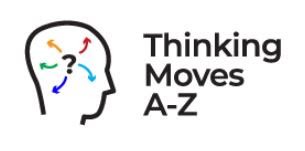Shanghai United International School
Thinking Moves Case Study
Before we began with Thinking Moves
Prior to 2018, the IB's ATL scheme also included metacognition, although students were more aware of it, rather than explicitly taught how to do it.
The impact on students
Students are more aware of their thinking as Thinking Moves is more explicit in directing them to what kinds of thinking would be useful in a specific context. Through teacher modeling, students become acclimated to a set of tools that help them think better such as the introduction of talk prompts. With this consistent exposure, students are using the Thinking Moves naturally within and outside the classroom setting.
Students can take ownership of the learning. Students leave our pyp program and enter middle school with an affinity for thinking critically and creatively. I have heard good things from the middle school teachers about our students and their capacity to think. I will research more about the impact of introducing Thinking Moves has had on the middle school and high school as it would be good to see how the whole education journey progresses using this scheme, specifically in an IB school.
What has been the reaction of the staff?
“Utilizing TM promotes a deeper understanding of concepts across subject areas, encourages creative problem-solving, and cultivates a culture of respectful and thoughtful communication within the classroom.
As teachers, we intentionally design activities that prompt students to familiarize themselves with the TM terminology and apply these skills, leading to more meaningful learning outcomes.
Integrating TM into our curriculum benefits both students and teachers by enhancing the learning experiences, and promoting higher-order thinking skills.”
Ms. Ada Wang, Y5 Teacher
“Thinking Moves enables students to become aware of the strategies they use when solving mathematical problems. Through Thinking Moves, students can monitor their understanding of mathematical concepts as they work through problems.”
-Ms. Christine, Y6 Teacher
“The Thinking Moves have helped me set objectives for conceptual understanding. When making lesson slides and worksheets I always try to include one of the thinking moves icons to remind myself and the students of the aim. When asking questions and giving instructions I use the thinking move hand signs. I feel it helps them concentrate on my words, understand and remember it better.”
Ms. Gussie (Art teacher)
‘Thinking Moves help structure thinking. They help make thinking more purposeful.’
Simon Pinard, Y3 Teacher, Shanghai United International School
‘Thinking Moves are creatively put together and are great thinking tools for kids in schools.’
Jake Riste-Smith, IT teacher, Shanghai United International School
What do the students say?
‘I think “Think Back” is amazing because I can review what I’m learning’ -Gary Li, Y4, Shanghai United International School
‘Thinking back can let you know answers from the past and let you do good on your tests. Thinking Moves can help you learn better!’ -Leo, Y4, Shanghai United International School
‘I think “Connect” is important because everyday we make connections in our learning.’ -Max, Y4, Shanghai United International School
“I like “Thinking Back” because it helps me during assessment.’ -Elena, Y4, Shanghai United International School
‘Thinking Moves help us learn because it lets us know how to think, remember, and ask questions.’ -Miumiu, Y4, Shanghai United International School
‘I enjoy figuring out the moves’ -Molly Ren-Smith, Y6, Shanghai United International School
‘Think before you move!’ -Leo Ren-Smith, Y3, Shanghai United International School
‘Look, Listen and Love Learning’
‘Maintain your brain. Thinking Moves for breakfast.’
‘Vitamins A-Z!’
Compiled by Vanessa Dewey,
Teacher rimary at Hiba Academy Shanghai





